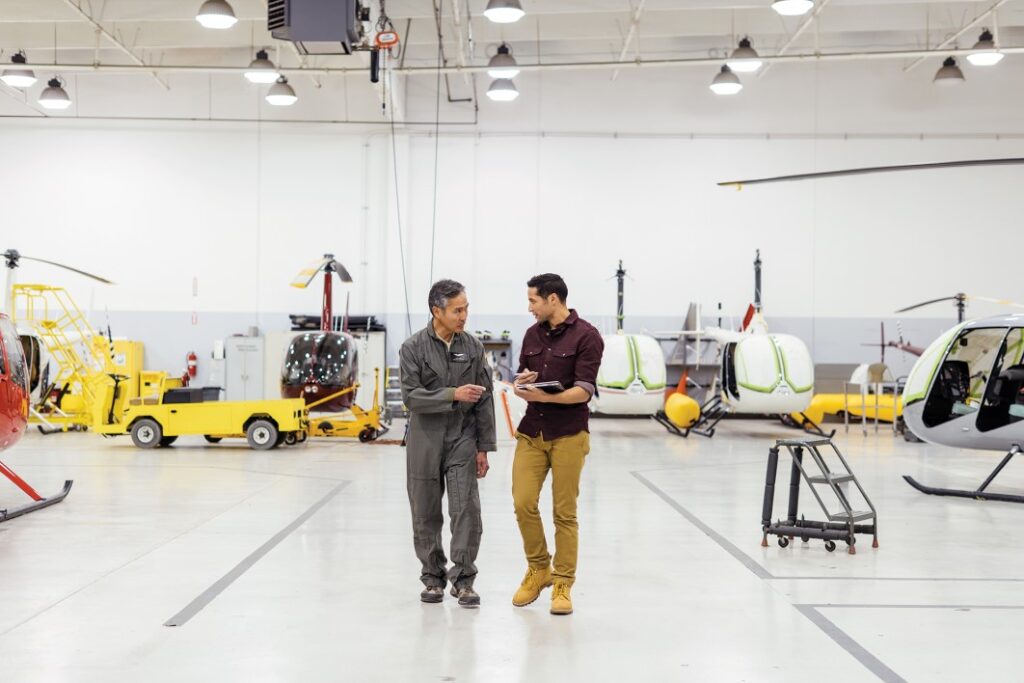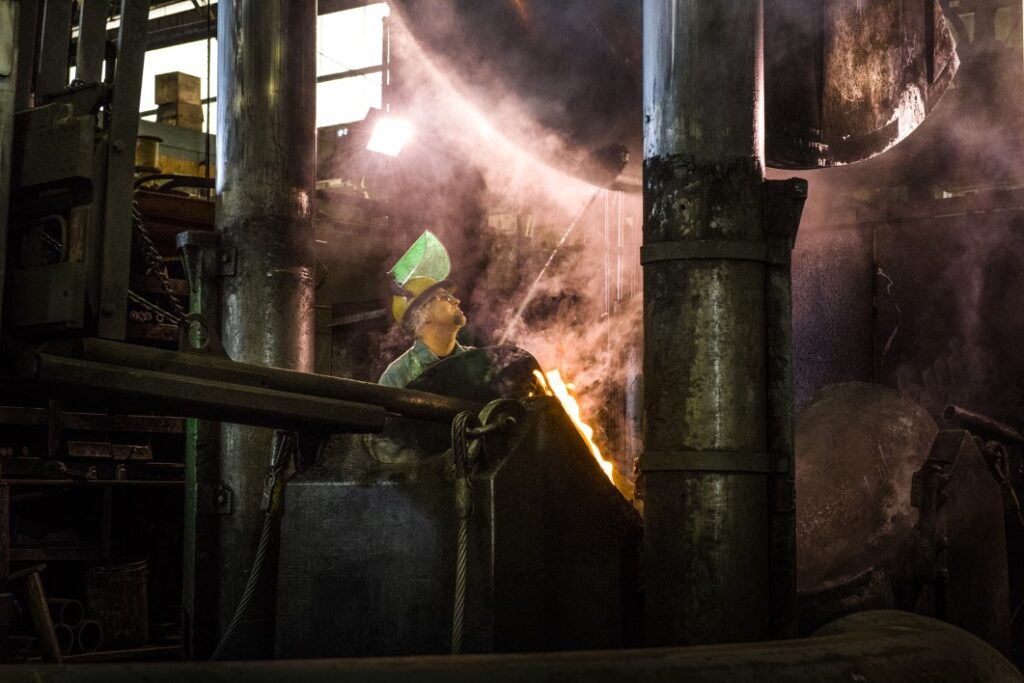
Industrial transformation: Scaling AI across the manufacturing value chain
The manufacturing industry stands on the brink of a transformative era, propelled by the advent of generative AI. AI is not just a tool for automation; it’s a catalyst for innovation, efficiency, and sustainability. AI can significantly enhance product and process innovation, reduce cycle times, and improve maintenance and security while also reducing carbon emissions. But there are some challenges to overcome before we can enjoy these advantages.
Against this background, Microsoft commissioned a research report in collaboration with MIT Technology Review Insights to uncover the state of AI adoption, expectations, and challenges to scaling AI in the manufacturing industry. This report, titled “Taking AI to the Next Level in Manufacturing” is a culmination of a global survey of 300 senior manufacturing executives and expert interviews aimed at guiding the industry to develop robust strategies to scale AI across the manufacturing value chain.
Below are some of the key findings from the report around AI ambitions, key challenges, and strategies to successfully implement AI. For complete insights, we invite you to download the full report.
AI ambitions: Investment, top use cases, and expectations
Investment: Major players leading the way
The transformative power of AI in the manufacturing sector is not just a future prospect, it’s an unfolding reality. 77% of surveyed firms with more than USD10 billion in annual revenue are already deploying AI use cases. Engineering and design executives are particularly proactive with 58% anticipating an increase in AI spending by more than 10% within the next two years. This surge in investment is mirrored in factory operations, where 43% of leaders anticipate a similar increase, a testament to the industry’s interest in AI’s potential to drive innovation and efficiency.
Top use cases: AI application from design to factory floor
Use cases are where “the rubber meets the road” for AI adoption. Pavandeep Kalra, Chief Technology Officer of AI for Microsoft Cloud for Industry, emphasizes that, “The barriers to AI use-case development are falling” as generative AI foundational models are reducing the requirement for industry-specific customizations. Among the survey sample, the AI use cases most likely to have progressed through production involve product design, conversational AI (chatbots), and content creation. On the factory floor, the focus is on process optimization, quality control, and asset maintenance use cases.
Expectations: Unlocking speed, efficiency, and innovation
Microsoft AI Solutuions
Learn moreThe potential for AI to deliver impact in the realm of engineering and design is becoming increasingly apparent with more than 40% of executives aiming to use AI to enhance speed and efficiency and minimize product failures. The experience of Gunaranjan Chaudhry, Director of Data Science at Symphony Industrial AI, exemplifies the transformative effect AI can have on the design process. He notes,
“AI speeds up the process by homing in on the specific parameters that you need to focus on. We’ve had design cycles being cut from 12 months to less than six months.”
Gunaranjan Chaudhry, Director of Data Science at Symphony Industrial AI
In factory operations, AI is expected to unlock innovation in production and assembly process, improve safety, and help reduce carbon footprint.
Taking AI to the Next Level in Manufacturing
Gain insights on AI adoption in the manufacturing industry

Key challenges to scaling AI in the manufacturing sector
Talent, skills, and data: The triad of AI scaling challenges
Ai Learning hub
Get familiar with the AI learning journeyOne of the main challenges in scaling AI use cases is the deficit of talent, skills, and data. Manufacturers cite this as their toughest challenge in both design and engineering and factory operations. Inadequate data quality and governance also hamper use-case development in both areas. Additionally, insufficient access to cloud-based compute power is another constraint in design and engineering. AI model governance is expected to be one of the big challenges on the factory floor, with 61% of manufacturers that have begun deploying AI use cases citing governance as a major data challenge. This underscores the difficulties in maintaining high standards of data quality, consistency, and compliance within the complex and variable manufacturing settings.
Critical need for data unification and contextualization
Scaling AI use cases can be hindered without solid data foundations, as respondents have identified inadequate data quality (57%), weak data integration (54%), and insufficient governance (47%) as significant challenges. Regrettably, only approximately one in five manufacturers have production assets with data prepared for utilization in current AI models. This issue is further exacerbated as manufacturers transition use cases into production. Notably, larger manufacturers tend to encounter a more pronounced challenge with unsuitable data.
Reducing fragmentation for AI to flourish
To effectively scale AI, data fragmentation must be minimized. Most manufacturers will need to update their data architecture, infrastructure, and processes to gain full benefits from AI, as well as other technological and business objectives. Prioritizing a modernization strategy that enhances interoperability between engineering and design and factory data systems, as well as between operational technology (OT) and information technology (IT), is crucial.
Strategies to successfully scale AI
The AI Strategy Roadmap: Navigating the stages of value creation
Read the blogAs manufacturers worldwide progress in their digital transformation journeys, data serves as the crucial enabler. To harness the full potential of AI, it is imperative to establish and maintain data quality, integration, and governance throughout the entire value chain, extending from design and production to distribution. Bridging the divide between OT and IT systems, which frequently function in isolation and adhere to disparate protocol and stands, is essential. By cultivating a more cohesive and consistent data landscape, manufacturers can expedite their AI integration and optimize their use case scalability. As manufacturers continue to tap into the transformative power of AI, here are some essential considerations.
Start with the business case
Companies should begin by identifying the business problem or challenge that technology, including AI, could address. Only then should technology solutions be considered. “Asking ‘what can we do with AI?’ can generate lots of great ideas,” says Philippe Rambach, Chief AI Officer of Schneider Electric, “but most will have limited impact if they don’t start with the actual business need.”
Embrace structural flexibility
In this evolving landscape, use-case development extends beyond the realm of AI experts. It has become a multidisciplinary endeavor as internal expertise is harnessed alongside data science and engineering teams, in collaboration with business product owners and IT professionals. Such a unified approach increases the chances of successful AI use-case development and deployment.
Prepare the data foundation
AI thrives in a mature data environment. To achieve this, manufacturers can strategically adopt modular updates and employ data virtualization techniques to incrementally enhance their systems and align their data architecture with AI capabilities without immediate, extensive change. It’s important to assess your organization’s data collection, storage, and processing capabilities, addressing any identified weaknesses before deploying AI use cases. This may involve consolidating data repositories where feasible. While AI models necessitate high-quality data, perfection is not a prerequisite for moving use cases into production.
Leverage AI for skill development
It’s natural for manufacturers to be concerned about the lack of AI skills and talent, but they should recognize that AI can aid in cultivating these skills within their workforce. Generative AI, for instance, simplifies the process for engineers and non-IT staff to engage with models. AI can also enhance the problem-solving abilities of production personnel.
Take AI to the next level
AI holds the potential to fundamentally transform the manufacturing sector, bringing about unparalleled opportunities for innovation, productivity, and environmental sustainability. To gain a deeper understanding of these insights and explore practical strategies for scaling AI use cases, download the full “MIT Technology Review Insights: Taking AI to the Next Level in Manufacturing” report today.
To explore Microsoft’s comprehensive suite of products and services that empower manufacturers to innovate, optimize, and scale AI use cases across the manufacturing value chain, visit the Microsoft Cloud for Manufacturing webpage. Join us in shaping the future of manufacturing.




